Arithmetic and Logical Operators
1/23
There's no tags or description
Looks like no tags are added yet.
Name | Mastery | Learn | Test | Matching | Spaced |
|---|
No study sessions yet.
24 Terms
CPU Registers
Registers are represented with a 4-bit number.
R0–R7: lower registers (bit-4 = 0)
R8-R12: higher registers (bit-4=1)
specific instructions store data to them automatically
R13 is the Stack Pointer (SP)
R14 is the Link Register (LR)
R15 is the program counter (PC)
Current Program Status Register (CPSR)
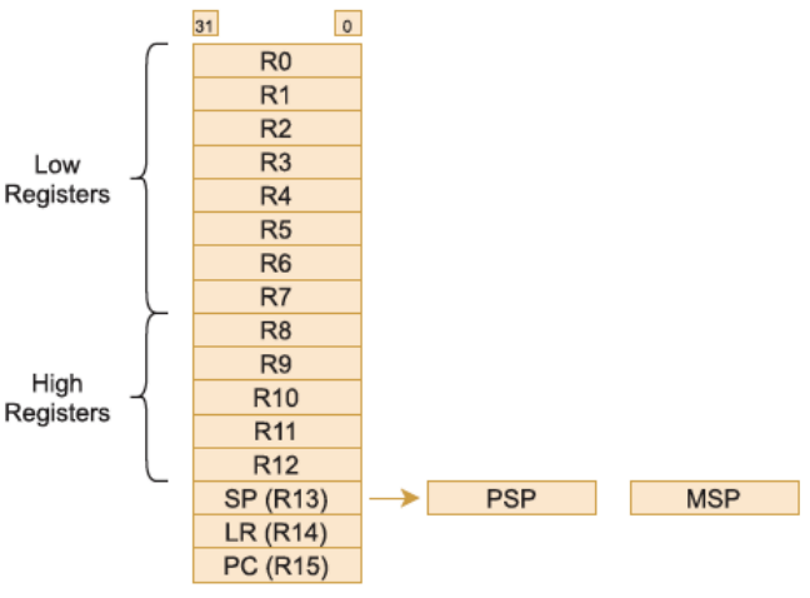
Move
Useful to copy data between registers, or set an immediate to a register

Adding

Subtracting
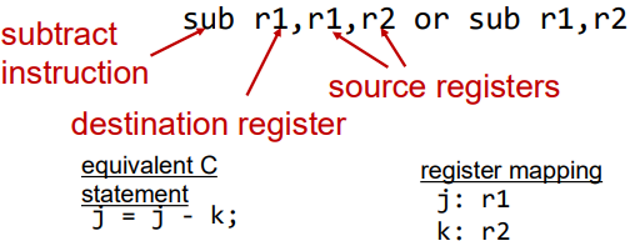
Complex Calculations
must be broken down in smaller steps —> compiler
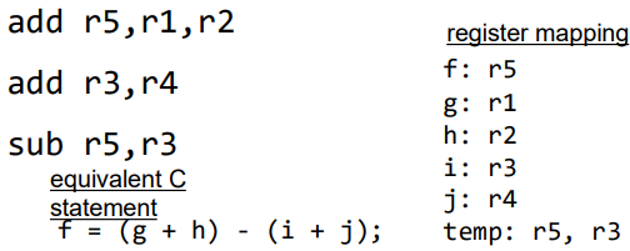
Number Encoding
The "add" instruction assumes that its operands are encoded using two’s complement
Since each register holds a 32-bit number:
Different instructions can have different expectations for how numbers are mapped or coded in registers

Two’s Compliment
Positive number is directly converted
To obtain negative number flip bits and add 1
To obtain the corresponding positive value flip bits again and add 1
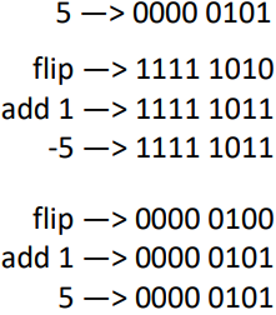
Recording Operation Effects
Sometimes, more than 32-bits is needed for the outcome of an operation
Carry bit
Overflow
Comparison
ARM uses a special register (CPSR) to record unusual arithmetic results
We will discuss this a lot when we get to loop and if statements
Current Program Status Register (CPSR)
An ARM register that records the state of the program
Arithmetic instructions will affect its value every time
N bit - "negative flag”: instruction result was negative
Z bit -"zero flag”: instruction result was zero
C bit - "carry flag”: Instruction causes a carry-out or borrow
V bit - "overflow flag”: Instruction produces an overflow in 2's complement numbers

Integer Arithmetic Operations in ARM

Bit Shifting
Key operation to manage individual bits in a register
Can be used for fast multiplication/division with powers of 2
ASR arithmetic-shift-right
LSL logical-shift-left
LSR logical-shift-right
ROR right-rotation
You can only use R0-R7
Non-immediate operations must use the same source and destination register (i.e, lsl r0, r0, r1)
Logical Left Bit Shifting
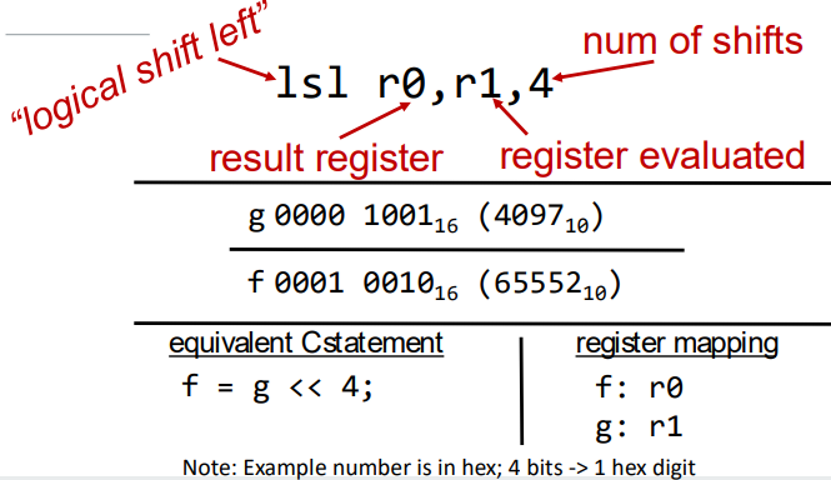
Logical Right Bit Shifting

Arithmetic Right Bit Shifting
Bits filled in are the same as the MSB e.g. if MSB is 0 then filled with 0s and if MSB is 1 then filled with 1s

Rotate Right Bit Shifting
Any bit that leaves from the right becomes the MSB
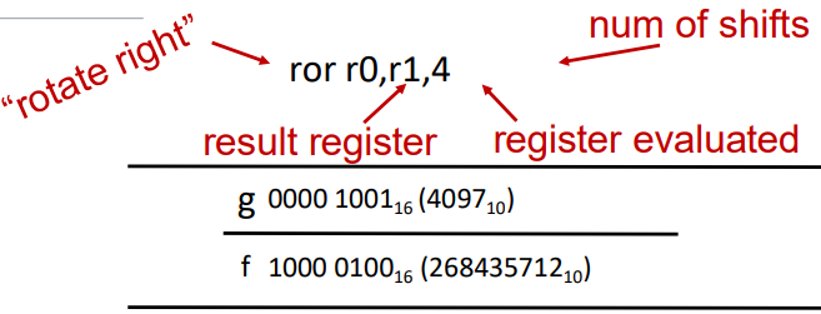
Logical Operators
Using these instructions you can apply all the Boolean operations you learned in the first part of this module
AND: Rn = Rd & Rm
EOR: Rn = Rd ^ Rm (xor)
ORR: Rn = Rd | Rm
BIC: Rn = Rd & ~Rm
update the N and Z flags according to the result for the PCSR
bit-by-bit AND
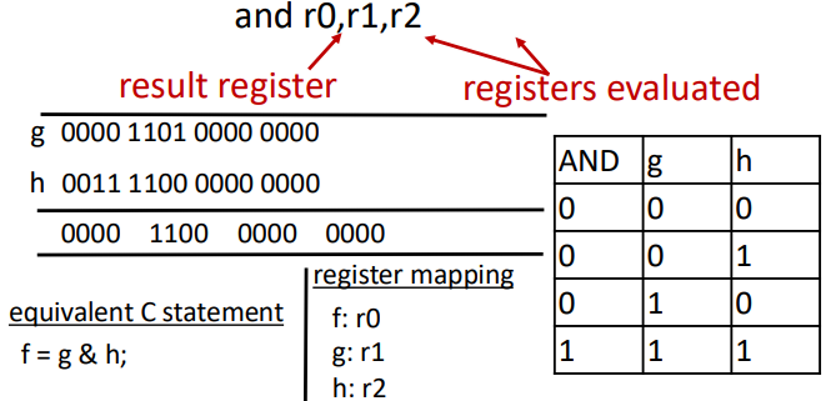
bit-by-bit ORR
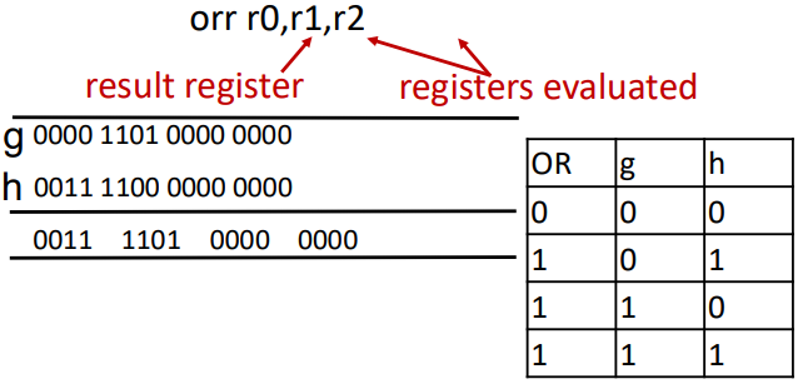
bit-by-bit EOR (Exclusive OR)
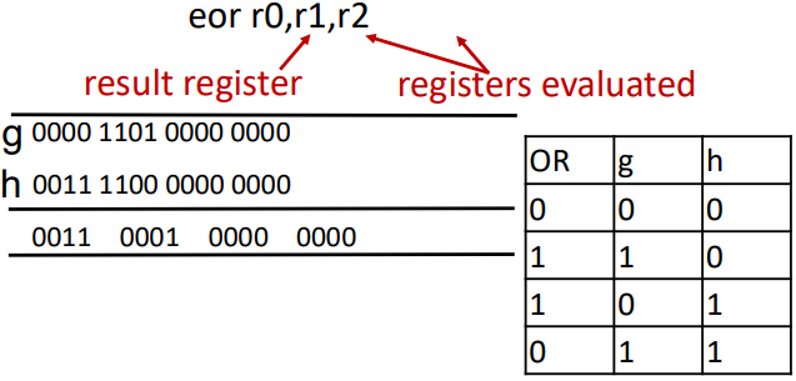
bit-by-bit MVN (Move and Not)
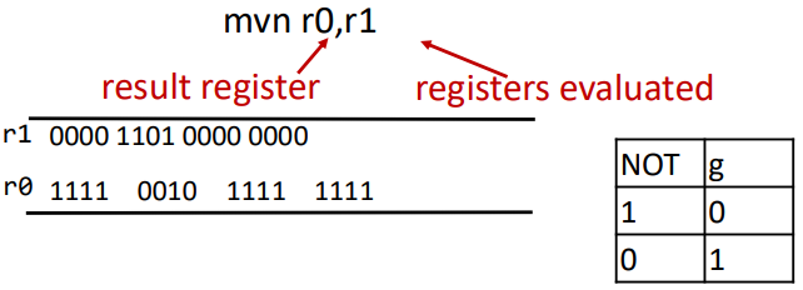
Immediate Operands
Programmers require operations with constants
incrementing a number (e.g. counting, array indexes)
initialising the value held by a program variable
Most instructions can replace one of the input register with an immediate, i.e. an integer value
Because ARM MIPS aims to optimize the space of a program, immediate size varies
You may need to load big values in a register in multiple steps
or use memory to store constants
Adding a Constant
Constants are frequently prepended with the symbol #
They are interpreted as a signed integer
Encoded using two’s complement

Integer Arithmetic Operations in ARM
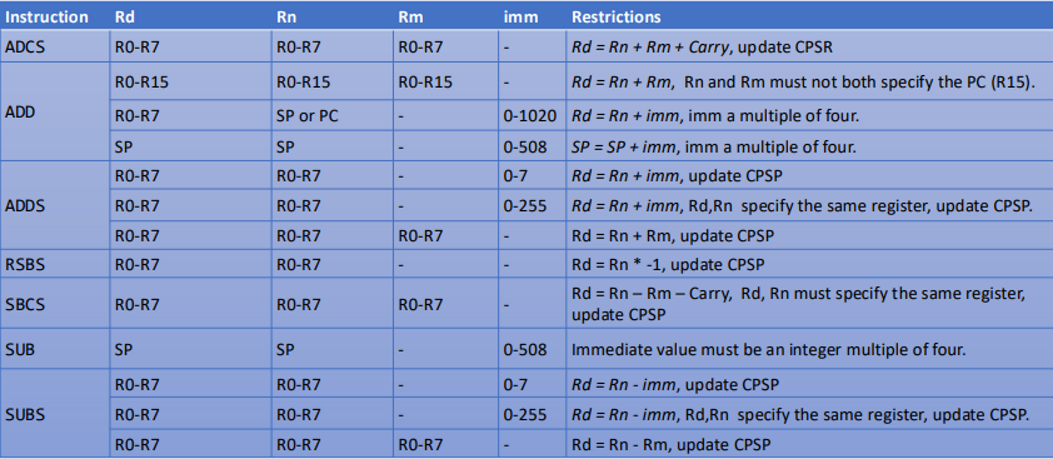
Loading Large Immediates
mov can load values between 0x00000000 to 0x0000FFFF to registers
What about larger integers?
movt can load 16-bit values into the upper 16 bits of a register (lower 16-bits remain the same)
mov r0, 0x1 @ r0 = 0x10000
mov r0, 0xffff @ Loading 0x7fffffff
movt r0, 0x7fff